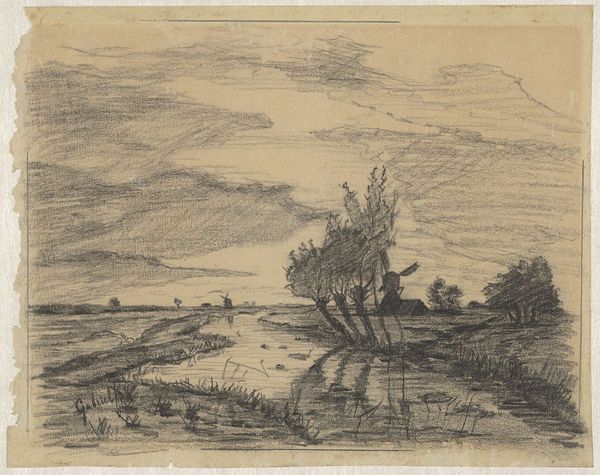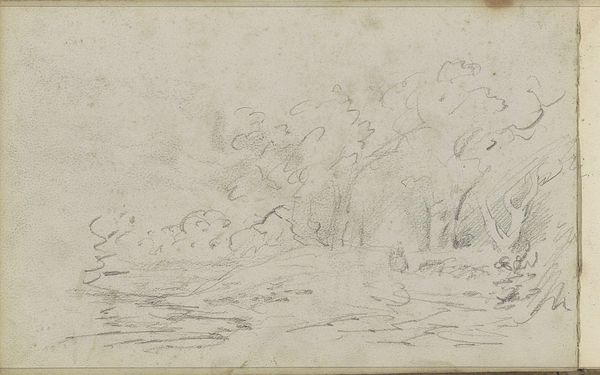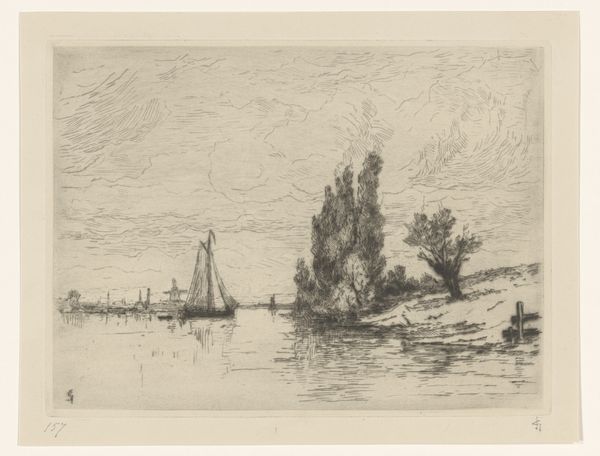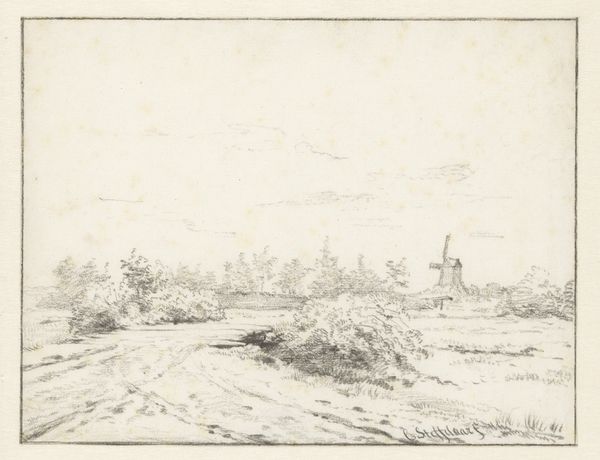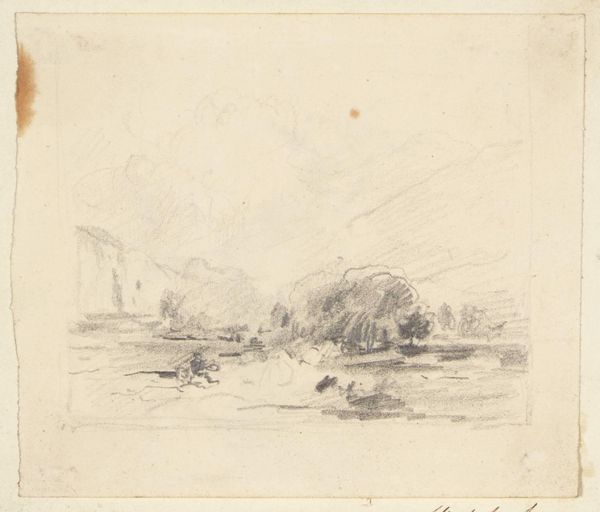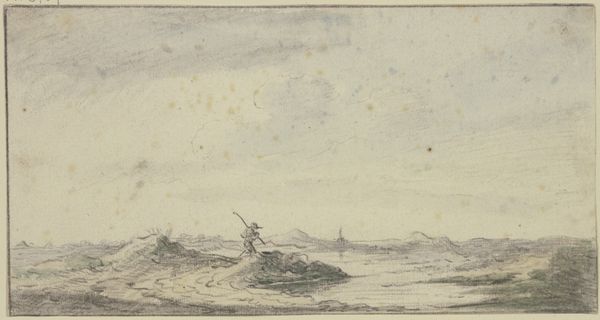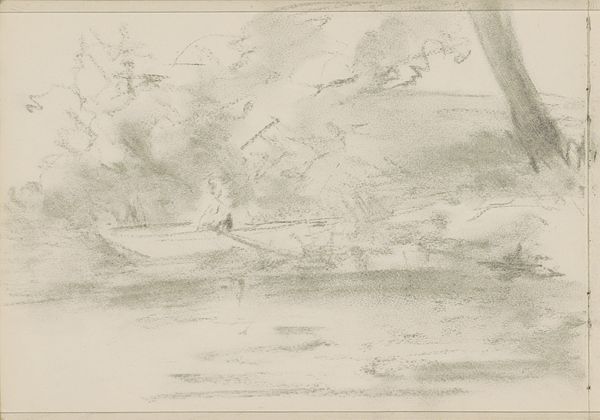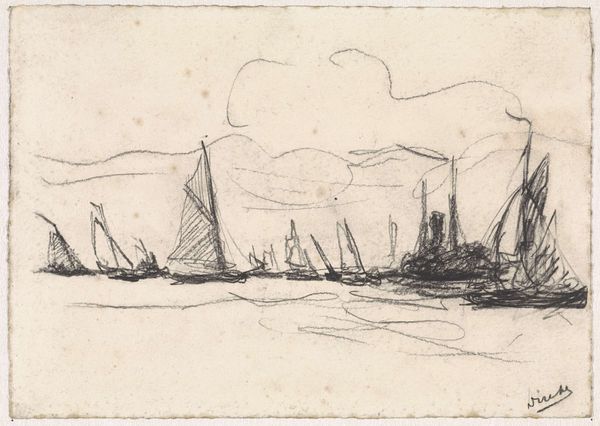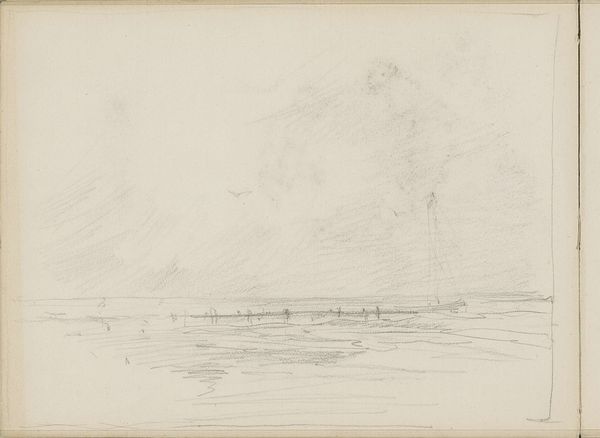
#
amateur sketch
#
light pencil work
#
pen sketch
#
pencil sketch
#
incomplete sketchy
#
personal sketchbook
#
ink drawing experimentation
#
pen-ink sketch
#
sketchbook drawing
#
sketchbook art
Dimensions: height 152 mm, width 238 mm
Copyright: Rijks Museum: Open Domain
Editor: Andreas Schelfhout’s "Sketch of a Landscape with a Mill in the Distance," likely created between 1797 and 1870, offers a peek into his artistic process. The softness and the medium immediately made me feel calm. What historical or cultural factors shaped Schelfhout's decision to depict landscapes in such a seemingly casual manner? Curator: That "casual" feel is key, isn’t it? But think about the burgeoning art market of the 19th century and the rise of the middle class. More artists, like Schelfhout, needed to find their niche. Landscapes were popular, a sign of national pride and connection to the land. But this isn't a grand, heroic landscape, is it? Editor: No, it’s quite intimate, almost private. Curator: Exactly. So, what does this suggest about the artist's intent or the intended audience? Perhaps the sketch itself functioned as commodity or perhaps was for pedagogical purpose. The rise of sketching societies and amateur art enthusiasts may have driven interest in works such as these. They tell a story about art's function, too, no? Editor: So, it's less about romanticizing nature, and more about making it accessible? Like a lesson. Curator: Precisely! Or even just offering a comforting reminder of home. How were Dutch identities being crafted at the time, and how does that affect the market? Remember, cultural context is paramount to a landscape's cultural work. How does this small drawing, for example, participate in wider social, economic, or political discussions of the era? Editor: I see. The sketch becomes part of a larger network of cultural values. Thank you. Curator: A useful starting point to consider broader societal concerns when encountering landscapes!
Comments
No comments
Be the first to comment and join the conversation on the ultimate creative platform.
